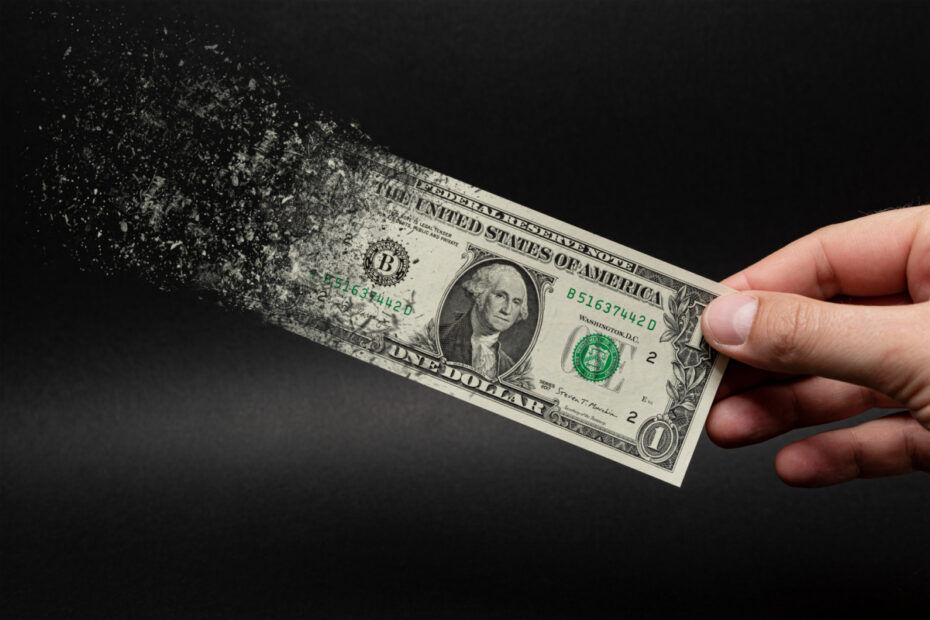What Is ‘Sticky Inflation’ And Why Are Millennials And Gen Zers Being Blamed For It?

Millennials and Gen Z have been blamed for a lot of things – killing traditional industries like retail department stores and traditional cable, ruining the housing market, abandoning the traditional 9-to-5 work day. The list of greivences goes on and on.
Now younger generations are being blamed for “sticky inflation” – meaning the costs of everything from cars to groceries isn’t likely to go down any time soon.
What is sticky inflation?
Sticky inflation is a concept that can help explain why the cost of everyday goods and services, like concert tickets, streaming services, clothes, and healthcare continue to go up.
When we talk about inflation, we’re referring to a general increase in the prices of things over time. But sticky inflation means that some prices are more resistant to change than others. For example, wages and rent can be “sticky” because they’re set by contracts or agreements that are hard to renegotiate quickly.
On the other hand, prices for everyday consumer goods like groceries and gas can be more “flexible” because they can change quickly in response to supply and demand.
When sticky inflation happens, it can make it harder for the prices of certain things to come down, even if the economy improves. This means that some things might continue to cost more than they used to, which can be extremely frustrating for consumers.
Why are millennials and Gen-Zers being blammed for sticky inflation?
In 2021, according to Fortune magazine, there were a lot of Americans who were in their prime spending years – mostly people between the ages of 19 and 54. That’s almost half the U.S. population, according to the Bureau of Labor Statistics.
During this life stage, people tend to spend more money on things like food, housing, clothing, and transportation, because they have more income and tend to make bigger purchases. They’re advancing in their careers, earning more money, starting families, buying homes, taking vacations, etc.
This is when expenses for almost every category increase the most. Basically, this is the time in your life when you’re most likely to spend a lot of money.
According to Bill Smead, chief investment officer at Smead Capital Management, there are a lot of people that fall in that age demographic in America right now. I know I certainly do, along with pretty much everyone I work with or socialize with.
Nearly 100 million Americans are in their prime earning and spending years. They’re going to keep on keeping on when it comes to their spending habits, which isn’t going to drive prices down any time soon.
“We have 92 million people between 22 and 42, and they’re all going to spend their money on necessities the next 10 years, whether the stock markets are good or bad. They’re just going to be living their life. The economy should be pretty good and the Fed’s going to have a hard time controlling inflation,” Snead told CNBC.
So basically, according to Snead, with everyone buying big-ticket items like homes for the next ten years and starting families, the economy’s going to keep on heating up. The Fed’s goal of bringing down inflation with rate hikes is gonna be even harder to achieve – because people just want to live their life.
While some may blame millennials for inflation, citing our love for avocado toast and cold brew, it’s safe to say that the real causes of rising prices are far more complex and systemic than our brunch habits.
Can we just catch a break for once?
It’s time for an inflation reality check.
If you’re a millennial or Gen Zer, it sort of sucks to hear you’re being blamed for inflation simply because you’re in the prime of your life and just want to go about living it comfortably. It may also feel like the deck is being stacked against you.
The current state of inflation has been a major topic of discussion among economists, and many of them believe that a combination of factors has contributed to the problem.
Two of the biggest culprits, according to some economists, are the rampant spending from stimulus money and pandemic boredom. When people received their stimulus checks, they had extra money to spend, which increased demand for goods and services. At the same time, the pandemic led to many people being stuck at home and looking for ways to pass the time, which also contributed to increased spending.
When you combine these factors with other issues like supply chain disruptions and rising wages, it’s easy to see why inflation has become such a major concern.
Price increases suck. And sticky inflation isn’t great news for the stock market, especially as the Fed signals it might continue to raise rates to combat it.
So the trick is learning to psychologically deal with it, even if the price of eggs is driving you insane.
Rather than letting inflation keep you up at night, it’s better to be mindful of your spending and budgeting habits.
By keeping track of your expenses and making smart purchasing decisions, you can help mitigate the impact of inflation on your finances. This might mean being more frugal in some areas, or looking for ways to cut back on unnecessary expenses.
Ultimately, it’s about finding a balance that allows you to live your life while still being mindful of costs and preparing for the future.